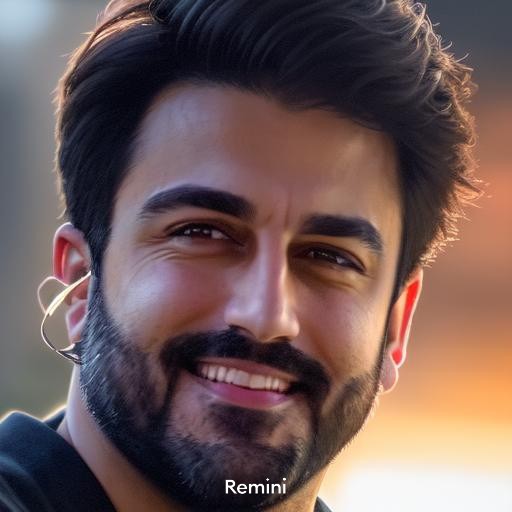With the use of deep learning algorithms and structured data sets, AI systems can now generate images that rival those created by human artists, simultaneously offering a fresh and innovative aesthetic that is rapidly transforming the realm of visual arts. These images are not constrained by the traditional rules and conventions that human artists tend to adhere to. Instead, they often exhibit bold, unexpected compositions and color combinations that challenge our preconceived notions of how an artwork should look.
AI's ability to process and learn from vast amounts of visual data results in imagery that can blend styles, techniques, and themes in unprecedented ways. Consequently, the aesthetic of AI-generated images is continually evolving, offering an ever-expanding source of inspiration and creative potential. Many have spoken out about the positives of AI art, such as Yahya Yuksel, an entrepreneur with a fascination for this emergent visual artform.
According to Yahya, AI-generated images bring numerous advantages to the table: they can produce high-quality images quickly, saving time and resources that human artists may need to invest. They can also generate endless variations of a design, presenting a plethora of options that can inspire and challenge creators, thereby enhancing human imagination.
Furthermore, these AI-created images, tuned and refined by deep learning algorithms, can offer insights that open up new perspectives on visual aesthetics and design principles. The integration of technology and artistry in this way fosters a robust collaborative environment between AI and human creators, streamlining the creative process and driving innovation.
This has raised questions about the potential for collaboration between AI and human creators. Can AI systems enhance human creativity? How can the intersection of technology and artistry be further explored through collaboration?
One of the most intriguing aspects of AI-generated images is their ability to serve as inspiration for human creators. By feeding vast amounts of data into their algorithms, AI systems are able to generate new and innovative visuals that humans may not have thought of on their own. This brings a unique opportunity for artists to collaborate with AI systems and use these generated images as a starting point for their own creative process. Yahya Yuksel sees the potential in how this collaboration can lead to the creation of truly original and groundbreaking pieces of art: combining the artistic mind of a human to the workstation of AI, much as we have approached making art with other mediums like paint or collage.
Yahya Yuksel believes that AI-generated images can also serve as a means of enhancing a seed of human imagination. By constantly pushing boundaries and coming up with unconventional visuals, AI systems challenge human creators to think outside the box and explore new perspectives. This not only enhances their individual creativity but also contributes to the overall advancement of visual arts. In this sense, AI can be seen as a tool that expands the possibilities and potential of human imagination.
Indeed, many artists are taking advantage of AI's capabilities to broaden their creative realm, using AI-generated visual prompts as a catalyst for storytelling. This form of artistry involves interpreting AI-generated images and using them as a springboard to craft compelling narratives. Artists look at the intricate details, the motifs, and the color schemes that the AI generates, and from there, their imagination runs wild to build stories around these visual cues. It is a process that intertwines visual art and literary creativity in a unique way.
For instance, an AI-generated image of a fantastical landscape might inspire an artist to spin a tale of an alien world, a dystopian future, or a mythical past. Yahya Yuksel emphasizes that this creative cross-pollination could open up new possibilities in the realm of storytelling, making the narrative richer, more diverse, and more innovative. This underscores the fact that the intersection between AI and human creativity is not just limited to visual arts, but can also extend to other forms of art such as literature, thus redefining the boundaries of human creative potential.
The intersection of technology and artistry has always been a dynamic and evolving relationship. With the rise of AI-generated images, this relationship is being further explored and expanded. While some may view AI as a threat to traditional forms of art, others see it as an opportunity for collaboration and innovation. By embracing the capabilities of AI in the realm of visual arts, we can open up new avenues for creativity and push the boundaries of what is considered possible. This collaboration between technology and artistry has the potential to create truly mesmerizing and thought-provoking pieces that challenge our perceptions of both AI and human creativity.
Whether you stand with Yahya Yuksel and others in favor of AI, or if you disagree with that position, the fact remains that collaborative potential between AI systems and human creators is an exciting prospect for the world of visual arts. By embracing this intersection of technology and artistry, we can enhance human imagination and push the boundaries of traditional forms of creativity. As AI continues to advance, it will be interesting to see how this collaboration evolves and what kind of groundbreaking works it will produce. The future holds endless possibilities for collaborative creativity between humans and machines. Rather than seeing AI as a replacement for human creators, let us embrace its potential to enhance our own creative abilities and explore the uncharted territory of collaborative creativity and see where this dynamic relationship takes us.





Comments